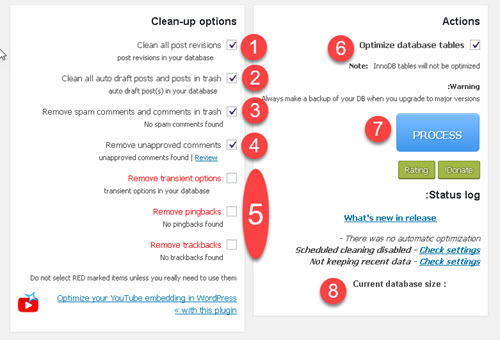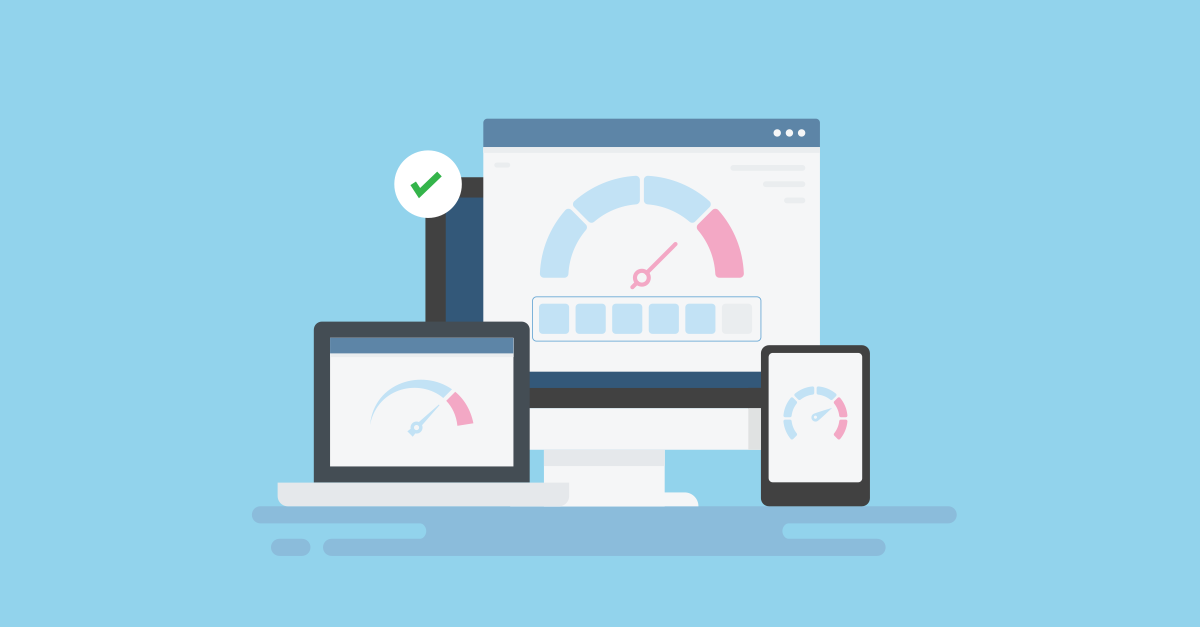How to Speed up your WordPress Website
The slowness of the WordPress content management system is one of the problems that most WordPress users face after a while when the speed of the site drops drastically. Slowness in WordPress can occur for various reasons, including the following:
- Using many plugins
- The problem in coding the template
- Use of nulled plugin and template
- Use of inappropriate hosting
- Heavy site database
- Use of unoptimized and high-volume images
- Not updating WordPress, WordPress plugins, and theme
Increasing server response time (Response Time)
We have become familiar with the reasons for WordPress’s slowness. In the lower part, we will explain how to increase its speed.
Using many plugins
One of the main reasons for WordPress’s speed drop is the installation of many plugins. Removing redundant plugins (both active and inactive) will significantly increase speed.
Use a light template to prevent the site from slowing down
Using a light format is one of the good solutions to prevent the site from slowing down and increase the speed of the site. Some templates are very heavy, they use images, videos, slides, plugins, etc. and cause the site to be slow. If you only pay attention to the beauty of the WordPress site template and do not pay attention to the number of photos, slides, videos, etc., with the increase in information and contents of the site and the increase in users, you will probably face the problem of slow site speed.
Use of nulled plugin and template
Using nulled templates and plugins usually causes slowness and many problems in WordPress. Those who provide nulled templates and plugins put codes inside them that, in addition to being viral, cause WordPress to slow down. So, as long as you can, Do not use nulled templates and plugins.
Use of inappropriate hosting
Whatever your script or content management system, using low-quality hosts will cause 100% speed problems. Unfortunately, the number of companies offering low-quality hosts is increasing rapidly, and these companies are not monitored. Even some big companies have started providing poor-quality services, so you must be careful when preparing the host.
Heavy site database
One of the problems we have seen in many sites has been the extreme slowness of the database, managers who have used any plugin to increase the speed of their site, but not only this problem has not been solved, but it has also gotten worse, it is interesting to know that When you don’t have a healthy and orderly database, no matter how much you increase the hardware power of your service, it cannot have a big impact on the speed and performance of your site. One of the best plugins to optimize the database and reduce the size of the WordPress database is the WP-Optimize plugin.
Introducing the WP-Optimize plugin for WordPress database optimization
WP Optimize plugin is considered one of the best plugins to optimize and reduce the size of the WordPress database.

Features of WP Optimize plugin

1- Delete all automatically saved posts in WordPress
As you know, from WordPress version 2.6, the option of automatically saving posts was added to the WordPress system. This option is very useful. or if you encounter a power outage problem, you can recover a large part of your posts, now suppose you have thousands of posts published on your WordPress site, WordPress copies several copies of almost every post, so a large number of posts Used and unused has been added in your WordPress database and this possibility has made your WordPress slower, this plugin can delete these posts and there is no need to worry because this plugin does not delete your pending posts, but the post Removes autosaves.
2- By checking this option, the posts in the trash and your automatic drafts will be deleted.
3- Deleting spam comments and comments in the trash
4- Removing unapproved views
5- Try not to tick these parts
You may lose some settings that you need, the most useful option is the Remove PingBack WordPress option, which removes the views that are reflected for you.
6- By checking this option, your WordPress database will be optimized.
7- By clicking on the Process option, the optimization operation will start.
8- In this section, the current volume of your database and also the volume that the database has deducted from your WordPress are displayed.
By clicking on the Tables option at the top of the page, you can see the database tables, the size of each table and the records of the tables, etc. in your WordPress.
By clicking on the Setting option, you can set the operations that we have described to be applied periodically automatically. (Not recommended
Use of unoptimized and high-volume images
It may have happened to you that you did not pay attention to reducing the size or compressing the images when uploading them to WordPress. After some time, when you check the speed of your site with tools like Gtmetrix, you will realize how much images need optimization. But optimizing each image manually is a difficult task. The right solution is to use Wp smush plugin.
Compress and optimize images in WordPress with WP Smush plugin
Advantages of using the image compression plugin
With the help of this image compression plugin, you can easily optimize all the images in the host and directory. Identify very large and small images and enable lazy loading. By doing this, you help to increase the speed of page loading and SEO of your website.
1- Install WP Smush plugin
You have two ways to install this plugin:
Enter the WordPress panel and enter the add section from the plugins section. Search for the name of the plugin and install and activate it.
2- Quick plugin settings
After installing the plugin, the image compression option will appear in the WordPress main menu. From the same section, you can access the dashboard sub-menu.
When you open the dashboard for the first time, you will be presented with steps to launch the plugin quickly. Click on the “begin setup” button.
Then enable Automatic Compression and click next. This way, when uploading smush images, it optimizes them.
The next step shows EXIF Metadata, which is dedicated to clearing image metadata (such as the time and location of the photo) and reducing its size. Enable this option and click next.
In this step, lazy load settings are displayed, which must be activated. Lazy load helps not to load all the page images at once and to open the images of the part of the page that the user is viewing.
In the Usage Data section, the plugin developer is given data mining permission to develop the plugin. Click next to enter the plugin page.
Not updating WordPress, WordPress plugin and theme
Updating WordPress, WordPress plugin, WordPress theme can affect the speed of WordPress site. Try to carefully keep the site, plugin and template updated. With the update, many bugs and errors will disappear and the site will work properly.
Increasing server response time (Response Time)
Your site is considered fast for search engines like Google when the site loading speed for the user is less than 3 seconds. Of course, more time, up to 4-5 seconds or a little more, may not be a problem, but less than three seconds is good, and less is great.
Server Response Time, or SRT, is the time it takes for your site’s server to respond to the browser’s request. In other words, it is the time it takes for the server to execute PHP and HTML files, etc., so that the user and visitor of your site can see the content.
Server Response Time, also called Time to First Byte (TTFB), specifies the amount of delay between the user and the server and the amount of time the browser must wait before the data arrives. If TFFB is 200 milliseconds for you, it does not mean that it will be the same for another user from another country or place.
How to increase the loading speed of the site or in other words how to reduce the response time?
The average amount of TTFB is as follows:
- 100 milliseconds is great.
- 200 seconds to 500 milliseconds is fine.
- 500 milliseconds to 1 second is acceptable.
- More than 1 second is bad.
Note that if the server takes a long time to load your files, as a result, the response time of your site will increase, and this is a problem that must be followed up and solved.
Why should server response time below?
1. Influencing site users
The shorter the response time of the server, the faster the loading time of the site. You can impress your first time visitors with this speed so they will surely come back to your site. Always keep in mind that the response time of the server has a great impact on the user’s experience on your site and the likelihood of returning to the site.
2. To get a better and higher rank in search engines like Google
Maybe your main purpose for reading this article is to check and fix the factors that slow down your website. As a search engine, Google hates pages with high loading time and may not index them at all. Don’t forget that optimizing WordPress speed is part of on-page SEO.
3. To make massive changes
There is no doubt that you can make a lot of changes to your website when you have a fast website. If you are a marketing website whose income depends on more sales, or even different sites whose goal is to generate income and have a product to sell, if the response time of the server is not low, the user will easily leave your website and He looks for his product on another website. Improving site speed can do wonders for search engines and your site users.
Factors that affect server response time
- Insecure web hosting
- Peak traffic times
- Weak cache and improper site and server configuration
- Old version of PHP
- Pages whose size increases continuously.
These were only part of the factors that can affect the response time of the site.
Optimizing and reducing the number of such scripts on a page can increase the speed of your website and handle more requests. Below are some ways to manage these scripts:
- Using external CSS and JavaScript files: It is better to use external JavaScript and style files. This makes it easier to cache this content.
- Combine CSS files: Combine your CSS files and keep them as an external file and call it in the <head> tag of your site so that it loads more easily. Instead of calling multiple files in one page, call only one file.
- Placing JavaScript files at the bottom of the page: Combine your JavaScript files and place them at the bottom of the page, this will reduce the loading time on WordPress HTTP and HTTPS sites.
- Placing CSS and javascript codes inline: If your CSS and JavaScript codes are short, then put them inline in HTML tags and don’t put them externally.
- Using the Keep Alive technique: This method maintains the TCP connection for HTTP signals in new requests. So make sure this feature is enabled for your website. Some hostings disable this mode, you can by putting the following code in the htaccess file. Activate it yourself.
<IfModule mod_headers.c>
Header set Connection keep-alive
</IfModule>
In this training, we examined the best possible solutions to reduce the response time of WordPress websites and also showed you the factors that would slow down your site. So think about increasing the speed of your website and share your experiences with us and others with your comments at the bottom of this post.
